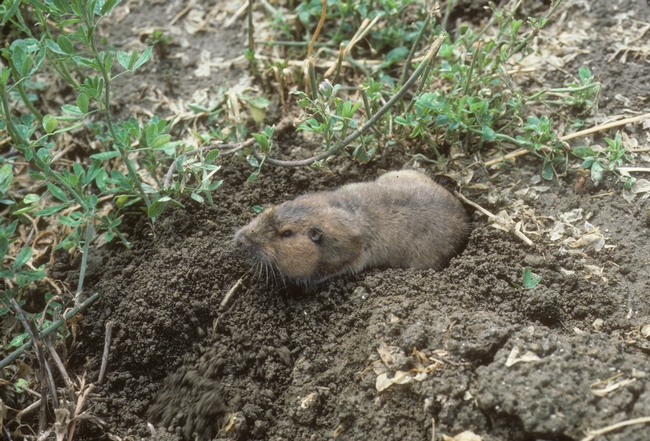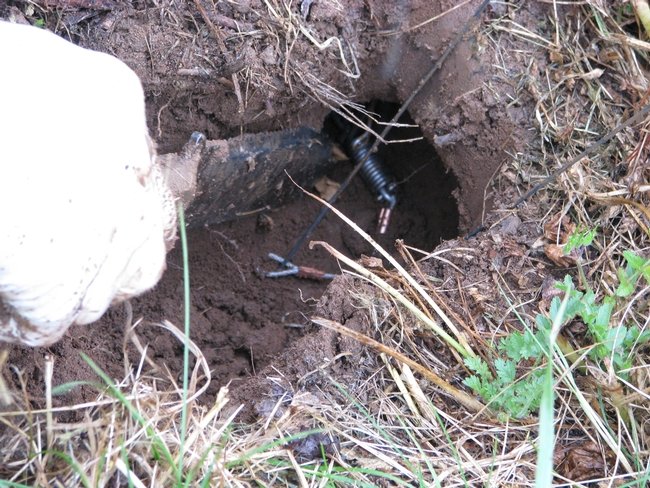
New guide helps organic growers manage burrowing rodents
Burrowing rodents can cause extensive and expensive damage to orchards and crop fields. To manage the pests without chemicals used on conventional farms, organic growers can consult a new publication from UC Agriculture and Natural Resources scientists.
“Burrowing Rodents: Developing a Management Plan for Organic Agriculture in California” outlines management within organically acceptable methods using an integrated pest management approach.
California ground squirrels, pocket gophers and meadow voles are the three most common species that cause damage. Squirrels chew on seedlings, fruit and nuts, killing young trees and reducing crop yields. In addition to plants, ground squirrels, pocket gophers and voles can chew on irrigation lines, and their burrow systems can channel water away from plants and erode the soil. The holes and mounds created by burrowing rodents pose hazards to farmworkers and farm machinery.
This publication helps growers identify the rodent species on their properties, their life cycles and tools available to control them.
“Growers can read about how to effectively select and set a range of traps for burrowing rodents,” said co-author Margaret Lloyd, UC Cooperative Extension small farms advisor for the Capitol Corridor. “Traps are an important tool for organic management, but maximizing control comes from integrating knowledge. Here we present information about rodent biology, trap efficacy, biocontrol, habitat management, plant protection and other approaches to collectively manage the pest problem.”
In the publication, Lloyd and Roger Baldwin, UC Cooperative Extension wildlife specialist in the UC Davis Department of Wildlife, Fish and Conservation Biology, review the effectiveness of commercially available traps – where to place the traps, whether to use attractants, and methods of euthanizing the animals.
They also offer cultural techniques for deterring rodents such as flooding fields and deep ripping soil to destroy burrow systems. Crops for orchard floors or cover cropping can be selected and managed to minimize habitat that protects and encourages gophers and voles.
For biological control, they suggest barn owls, raptors and snakes might be able to assist, but warn growers that predators alone will not be able to eat enough of the rodents to reduce the high populations to tolerable levels for many growers.
“Effective management will rely on a suite of tools,” said Baldwin.
The 15-page publication is available for free download at https://anrcatalog.ucanr.edu/Details.aspx?itemNo=8688.
Comments:
Dry ice can be effective. However, the important detail is that it is not legal to use dry ice in this manner. When you use dry ice to kill rodents, it becomes a pesticide, yet it is not registered for such a use. So, the short answer is that it is not a legal approach for managing most burrowing rodents. I say “most” because there is a very specific label that allows its use against rats in commensal settings. However, to do so, you have to use specific dry ice that is registered for this use, and it is very difficult, if not impossible, to find. Therefore, even in these situations, dry ice really isn’t a practical option.
The other item to consider would be if it’s even considered an acceptable tool for organic producers (i.e., certified). I doubt it, considering it isn’t even registered as a pesticide.
Roger A. Baldwin, Ph.D.
Wildlife Specialist
UC Davis Department of Wildlife, Fish, and Conservation Biology




Posted by RIck Lanman on June 21, 2021 at 7:12 PM